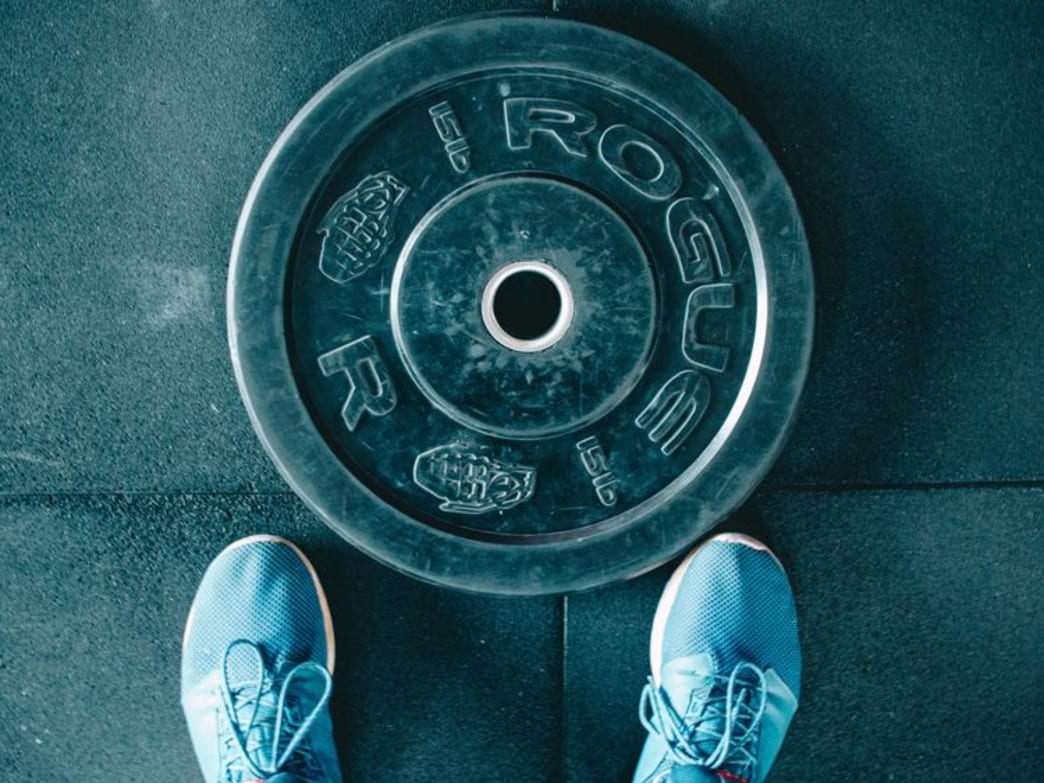






The Low-Carb Diet On Trial
Here’s what you need to know about the low-carb diet, plus tips and a meal plan if you decide it’s for you.
If you look on Instagram in particular you’d be forgiven for assuming there’s a worldwide shortage of pasta, bread and rice. Low-carb diets are incredibly popular and they have a great deal of vocal support online – but then so do cats playing pianos, so we were keen to check if the idea of cutting carbs is backed up by vigorous scientific standards. For the low-down on low-carb diets, we spoke to dietitian Duane Mellor of the British Dietetic Association. And if you like what you hear, we’ve got a seven-day low-carb meal plan to get you started.
What is the evidence regarding the effectiveness of low-carb diets for weight loss?
There is good evidence for low-carbohydrate diets in the short term – up to three months. In longer studies there are no clear benefits over other types of reduced-calorie diets. There are some concerns about low-carbohydrate diets that are not well planned, because they can limit the intake of some nutrients. This can be avoided by carefully planning a low-carbohydrate diet.
One key challenge is defining what a low-carbohydrate diet is. Some say less than 45% of energy, others 130g per day, and others less than 50g per day. The lower the carbohydrate intake, the greater the typical reduction in energy intake and the more rapid the weight loss.
What are the positives of a low-carb diet?
It can be very effective for some people with respect to weight loss, and it can also help some people with type 2 diabetes manage their blood glucose levels. These benefits are often reported by individuals and are less obvious in clinical trials. This is perhaps because when people consciously choose to go on a low-carbohydrate diet, they also make healthier food choices all round.
What are the negatives?
The low-carb diet can, like many types of diet, result in low intakes of key nutrients like B vitamins and fibre if not carefully put together. Some people also report flu-like symptoms when they initially go on a very low-carbohydrate diet like the ketogenic or “keto” diet, which normally pass. With the keto diet in particular, lots of people report bad breath or body odour. If fibre is reduced, this can increase the risk of constipation.
Are there any situations where you would recommend a low-carb diet?
It would be part of a discussion for people with type 2 diabetes or who are at risk of developing type 2 diabetes in line with the Diabetes UK nutrition guidelines. It is about carefully discussing a person’s health, personal preferences and goals. Lower-carbohydrate diets can be one of many approaches that can help people achieve their health goals.
Why do you think it has become such a popular style of diet?
It helps to reduce calorie intake and it also has a number of famous advocates and vocal supporters on the internet. However, the focus on nutrients and not foods is not helpful. We eat food, not carbohydrate, and perhaps understanding the food we eat better may help us improve the quality of our diets, improve our health and lose weight – if that is our goal.
Would you recommend it to an average person looking to lose weight or just eat healthily?
It is an option, but I would encourage them to think about it carefully and seek advice. It can, like any diet, have side effects. It can help focus a person’s mind on making better food choices. However, this can be done more simply by reducing intake of foods with added sugar, refined starches and fats.
Low-Carb Meal Plan
To aid your fat loss efforts, follow this seven-day low-carb meal plan and easy-to-follow tips from trainer Rich Phillipps.
Day One
Breakfast: Scrambled eggs with wilted spinach; apple
Lunch: Chicken and red pepper wrap with spicy mayonnaise, carrot sticks and hummus
Dinner: Salmon fillet, baked sweet potato and roasted broccoli
Snack: Whey protein shake; pear
RECOMMENDED: Protein Shake Recipes
Day Two
Breakfast: Full-fat yogurt with cashew nuts and banana
Lunch: Chicken, avocado, cucumber, tomato and radish salad with balsamic vinegar dressing
Dinner: Beef and onion bolognese with courgette linguini
Snack: Protein bar/shake
RECOMMENDED: High-Protein Snacks
Day Three
Breakfast: Omelette made with onions and mushrooms
Lunch: Chicken, mango, cucumber and tomato salad with balsamic vinegar and olive oil dressing
Dinner: Free-range sausages with mashed sweet potato and green beans
Snack: Yogurt with fresh berries
Day Four
Breakfast: Egg fried in coconut oil served with almonds and strawberries on the side
Lunch: Free-range sausages, vegetable sticks and hummus; banana
Dinner: Turkey burgers with salad and sweet potato chips
Snack: Apple; protein shake
Day Five
Breakfast: Poached eggs with wilted spinach and granary toast
Lunch: Spicy chicken and salad wrap; fruit salad with full-fat yogurt and desiccated coconut
Dinner: Beef chilli made with onions and peppers (make a double portion), rice
Snack: Protein shake; handful of brazil nuts
RECOMMENDED: Healthy Chilli Con Carne Recipe
Day Six
Breakfast: Poached eggs, ham, granary toast and fried tomatoes
Lunch: Leftover beef chilli
Dinner: Baked haddock, mixed roasted vegetables and new potatoes
Snack: Protein shake
Day Seven
Breakfast: Scrambled eggs with paprika and lime, wilted spinach and mushrooms
Lunch: Chicken breast slices with beetroot and mixed nuts; apple
Dinner: Roast chicken and sweet potatoes and roasted broccoli
Snack: Frozen mixed berry smoothie with strawberry whey protein
Low-Carb Diet Tips
Stick with it
“Initially you may experience slight brain fog, sweet cravings and mild headaches as your body starts to shift to a more effective state of fat-burning,” Phillipps says. “This experience is different for everyone, but stick with it as it will soon pass – and it’ll be well worth it in the long run.”
Eat more protein
“You want to burn fat, not lose existing muscle mass. But with relatively few carbs to support your workout recovery, eating protein with every meal becomes essential. Red meat, poultry, fish and eggs are all ideal options.”
Go green
“A common complaint with low-carb diets is constipation, which is normally a side effect of not eating enough fibrous vegetables. Be sure to include at least one or two handfuls of the green stuff in each meal to avoid this - think broccoli, asparagus and kale. This will also keep your digestive system healthy and help keep you full.”
Feast on fat
“A mistake often made with low-carb diets is not eating sufficient fats and ending up on a low-carb/low-calorie diet. This is a disaster and at the very least will make the diet almost impossible to stick to. To avoid this, cook with butter or olive oil and snack on nuts, which provide essential fatty acids to to replace the calories you’re missing out on due to the lack of carbs.”
Add a refuel day
“Try to maintain a very low carb intake (or ideally cut them out altogether) for a fortnight, then you can begin to reintroduce one high-carb ‘refuel’ day per week. This will allow you to replenish your glycogen stores and ensure that your thyroid does’t become sluggish – which would affect your metabolism, resulting in a negative impact on fat loss – thanks to constant low-carb eating. For optimum results, stick to clean carb sources such as oats, sweet potatoes and brown or wholemeal rice."
The No Sugar, No Starch Diet
Still not sure how to get started with low-carb eating? For a slightly simpler (and more beginner-friendly) approach, try the No Sugar, No Starch diet – as recommended by the Duke University Medical Centre’s Lifestyle Medicine Clinic – which offers simple guidelines on different food groups and how much of each you should eat. Here are the types of food you can have, and which ones to avoid.
Every day
At least 170g salad greens (spinach, rocket, lettuce etc) At least 100g non-starchy vegetables (avoid potatoes, basically)
Often
Meat and poultry Fish Eggs Vegetables (apart from potatoes)
Limited quantities
Cheese Fruit Potatoes
Snacks
Hard-boiled eggs Nuts Carrot and celery sticks with houmous Cottage cheese Beef jerky (with no added sugar) Olives Avocado
What to avoid
Bread and other foods containing flour (eg cakes) Sugar Cereal Fruit juices Honey Canned soups Ketchup, sweet condiments and relishes Alcohol “Fat-free” or “light” products and foods, which often contain hidden sugars and starches Artificial sweeteners Fizzy drinks Pretty much all processed foods
Written by Nick Harris-Fry for Coach and legally licensed through the Matcha publisher network. Please direct all licensing questions to legal@getmatcha.com.
